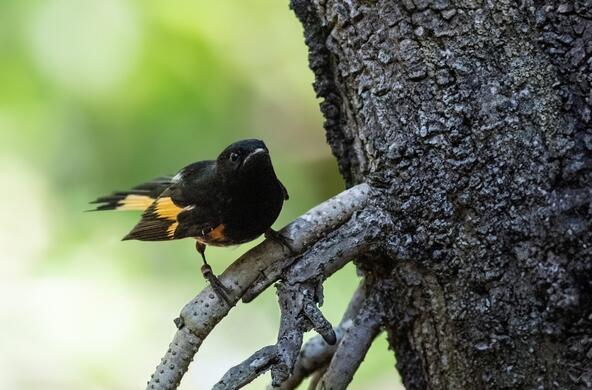Health officials and researchers are scratching their heads, wondering whether there will be a repeat this summer of last year's spike in the West Nile virus, a potentially fatal illness that mosquitoes transmit.
"There was increased mosquito activity last summer. But it's really hard to predict. It's a complex ecology, and I don't think anyone really has a clear model yet because there are so many factors involved," said Richard Kuhn, a professor and head of Purdue University's department of biological sciences, who studies West Nile and dengue viruses and their interactions with humans.
Kuhn said a wet autumn in 2011 followed by a mild winter and a wet and unusually warm spring in the Northeast and Midwest in 2012 could have contributed to last year's proliferation of mosquitoes and the virus.
Last year was the second-worst outbreak of the virus since officials first detected it in the United States in 1999. The largest number of cases was reported in 2003, when 9,862 people were infected and 264 died, according to the Centers for Disease Control and Prevention.
In 2012, there were 5,674 cases of the disease in people in the United States and 286 deaths — the most fatalities ever.
No mosquito samples in Pennsylvania have tested positive for the virus this year — a contrast with last year, when the virus was detected on May 3 in Berks County.
In Pennsylvania, there were 60 cases in humans and four deaths attributed to the disease in 2012, according to the Pennsylvania Department of Health. It was the second worst year for the virus in the state. In 2003, there were 237 cases and nine deaths.
Last year, 51 of the state's 67 counties reported the presence of West Nile in mosquitoes. York and Adams counties had the highest incidence.
There were two reported human cases of the virus last year in Allegheny County and 173 mosquito samples that tested positive for the virus — the most ever, according to the Allegheny County Health Department.
"It's a concern that the numbers were as high as they were last summer," said Dr. Ronald Vorhees, the department's acting director.
In the summers of 2010 and 2011, about 10 percent of the mosquitoes the department tested had the virus. Last year, 28 percent of the samples did, Vorhees said.
Next month, the department will start treating Pittsburgh's 10,000 catch basins. In March, the department started treating some of the county's wetlands.
Most people infected with West Nile never show symptoms. The most severe form of the disease can cause a coma, convulsions, muscle weakness, paralysis and death.
"Eighty percent of the people infected show no symptoms. The virus becomes a problem with older people or with people who have compromised immune systems," said Kait Gillis, a spokeswoman for the Pennsylvania Department of Health.
West Nile virus is believed to have first appeared in the U.S. in 1999 in the New York City area and then gradually spread across the country. Mosquitoes get the virus from feeding on infected birds and then spread it to people they bite.
One year ago, many researchers anticipated the summer's explosion of mosquitoes based on prior weather conditions, said Shannon L. LaDeau, an ecologist at the Cary Institute of Ecosystem Studies, an environmental research organization in Millbrook, N.Y.
Weather is only one of dozens of factors that might indicate how mosquito populations might fare in a given year, she said.
And a large number of mosquitoes does not necessarily correlate with a high incidence of the virus if mosquitoes have not interacted with birds.
"It is a complex ecological story. Last year's winter was stronger, so not as many mosquito eggs are likely to have survived. I would hope that it would be less of the virus than last year. But there have been many surprises with West Nile," LaDeau said.
Last summer, the virus flourished in drought-stricken areas of the Midwest.
"When there are drought conditions, it means that birds and mosquitoes are probably sharing the same water sources much more often, which would lead to a buildup of the pathogen in mosquitoes," LaDeau said.
The virus has spread to all 48 contiguous states, but flourishes more in urban areas where mosquitoes and birds can find more shelter from cold weather, she said.






